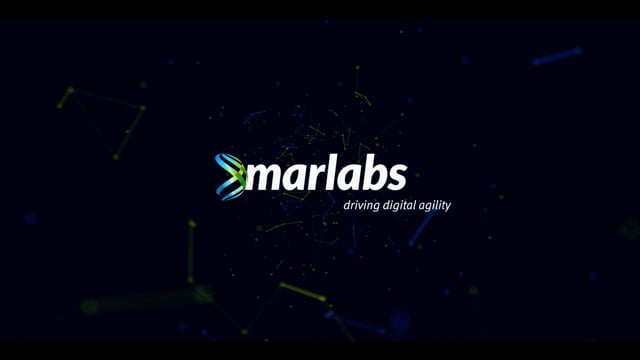Explore the challenges faced by those affected by rare diseases, the critical importance of timely diagnosis, and the emerging initiatives and organizations, such as the Rare Genomics Institute and Global Genes, that are leveraging AI technologies to create a brighter future for rare disease warriors worldwide. Together, we can ignite a movement of understanding, support, and hope in the fight against rare diseases.
Healthcare professionals are at the forefront of rare disease management, but their expertise is often limited due to the rarity and complexity of these conditions. Generative AI can empower healthcare professionals by providing them with comprehensive and evidence-based clinical guidelines.
Introduction
In the vast realm of medicine, there exists a hidden battlefield where countless individuals and their families wage a courageous fight against rare diseases, where lives are deeply impacted by complex symptoms and limited treatment options. For far too many, especially infants and young children, the battle ends prematurely, leaving hearts broken and dreams unfulfilled.
These conditions, numbering over 7,000, along with 500 types of rare cancers, present formidable challenges, demanding our utmost attention and compassion. The struggle is real, as the lack of awareness and knowledge surrounding rare diseases hampers early diagnosis and timely treatment. The weight of these conditions isn’t borne solely by the patients; physicians and clinicians wrestle with the immense challenges of diagnosing and managing these enigmatic foes.
But in this dark landscape, where an estimated 350 million people are affected globally, a glimmer of hope shines through the magic of Generative AI, illuminating a path towards improved education and awareness.
Addressing Knowledge and Education Gaps
In this pursuit of understanding rare diseases, the key lies in the dissemination of accurate and up-to-date information. Imagine a beacon of knowledge, a comprehensive registry of rare diseases, enriched with semantic links that connect the dots between identification, symptoms, and treatments. This powerful repository holds the promise to bridge the knowledge gap, and with the wondrous abilities of Generative AI, it becomes an accessible digital tool for healthcare providers, patients, and the public alike.
Amidst the shadows, rays of hope emerge in the form of visionary organizations and initiatives. They recognize the potential of Generative AI in the realm of rare disease education, determined to brighten lives. One such champion is the Rare Genomics Institute (RGI), whose creation “RareShare” stands tall as an online community and knowledge-sharing platform for the rare disease warriors and their families. It is through collaboration and the power of AI algorithms that RareShare becomes a haven of personalized information and unwavering support for patients on their journey.
Another beacon of light comes from the Global Genes organization, illuminating the path with their “Rare Disease Patient Impact Grant Program.” This program fuels innovative projects dedicated to rare disease education and awareness, fostering a world where knowledge becomes the weapon to triumph. AI technologies take center stage, weaving educational resources and platforms that empower patients, caregivers, and healthcare professionals alike.
The Power of Generative AI in Rare Disease Education
Generative AI offers exciting possibilities for rare disease education and awareness. Through an intuitive and user-friendly interface, individuals can access a wealth of information on specific rare diseases, including their identification, symptoms, and available treatment options. By summarizing complex medical literature and providing intelligent responses to user queries, Generative AI systems can empower physicians, clinicians, and patients alike with reliable and easily digestible information.
Imagine a world where a comprehensive digital solution powered by Generative AI serves as a beacon of hope for those grappling with rare diseases. This vision encompasses a Rare Disease Registry, a repository of knowledge augmented by diverse data sources, and a sophisticated Generative AI interface. Let’s delve into this visionary digital solution that has the potential to make a profound impact on rare disease education and awareness.
The Rare Disease Registry: A Storehouse of Knowledge
At the heart of this innovative solution lies the Rare Disease Registry, an extensive database brimming with information on rare diseases, their symptoms, identification, and available treatments. Augmented with advanced computer vision technology, the registry includes an image repository that aids in disease detection and progression tracking. Imagine the wealth of knowledge stored in one central location, readily accessible to anyone seeking reliable information on rare diseases.
Integration of Data Sources: Enriching the Knowledge Base
To empower the Rare Disease Registry, data from various sources is harnessed, creating a comprehensive knowledge base. Valuable insights from historic rare disease data found in healthcare providers’ Electronic Medical Records (EMRs) are incorporated, offering real-world evidence that reflects actual disease patterns, treatment outcomes, and clinical practices. This integration enhances the practicality and relevance of the knowledge base, leading to more informed decision-making.
The Generative AI Interface: A Gateway to Empowerment
The Generative AI interface serves as a user-friendly portal to the Rare Disease Registry, unlocking a world of possibilities for healthcare providers, patients, and the public. Through this interface, users can access the vast knowledge base and interact with the Generative AI system to obtain accurate and reliable information. Equipped with natural language processing capabilities, the AI system distills complex medical literature into easily digestible summaries, making rare disease information accessible to all.
The Core Engine: Large Language Models (LLMs)
The driving force behind Generative AI is the Large Language Model (LLM), a powerful algorithm capable of processing natural language and generating human-like responses. Trained on vast datasets from the internet, LLMs excel at tasks like summarizing text, translating languages, and engaging in conversational dialogues. While new LLMs continue to emerge, there’s a growing interest in creating smaller, custom models that draw insights from proprietary enterprise data.
The proposed solution follows a similar approach, building a custom LLM trained with rare disease data and utilizes Dolly, an open-source Large Language Model (LLM) from Databricks, which undergoes fine-tuning using the rare disease dataset.
The dataset is stored as natural language texts within Databricks. This innovative solution takes the form of a conversational chatbot, allowing users to ask questions about rare diseases and receive high-quality responses. The contextualized data captured in Databricks proves valuable in expanding its utility to create other machine learning applications, such as rare disease detection, and developing interpretable ML models that offer insights into rare disease detection for medical professionals.
The Benefits of the Proposed Solution
- Enhanced Healthcare Provider Engagement: With a comprehensive knowledge base at their fingertips, healthcare providers can make accurate diagnoses, plan treatments, and make evidence-based decisions. By correlating clinical practice patterns with integrated EMR data, personalized, and targeted care becomes a reality.
- Patient Group Identification: Predictive models within the solution can identify undiagnosed patients, allowing for targeted screening and early detection. This timely identification leads to improved patient outcomes and shorter diagnosis timelines.
- Support for Drug R&D: The Rare Disease Registry’s aggregated data becomes a valuable resource for pharmaceutical companies involved in rare disease drug research. Insights gained from the data aid in identifying patient populations, understanding disease progression, and designing effective clinical trials.
- Patient Engagement and Empowerment: Patients benefit from a mobile application integrated with the Generative AI system. This app facilitates symptom tracking, disease progression monitoring, and access to educational resources. Real-world evidence collected through the app empowers healthcare providers with invaluable insights into patients’ experiences, treatment effectiveness, and quality of life.







